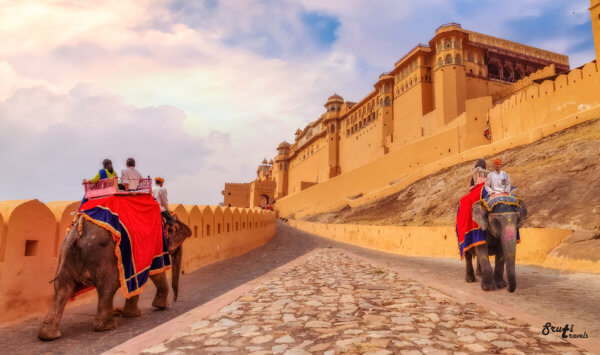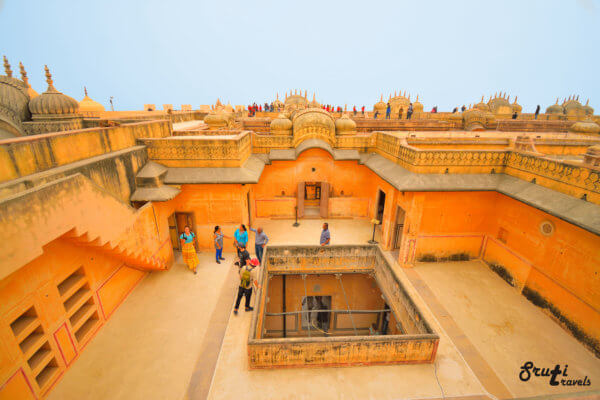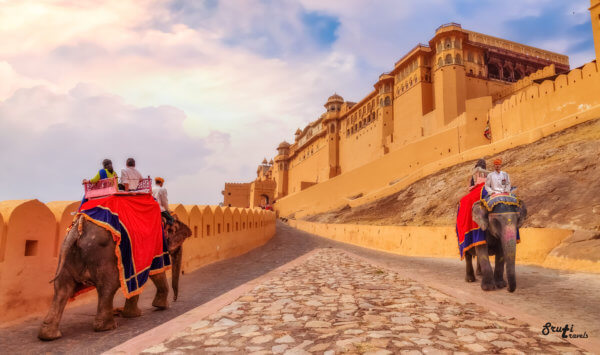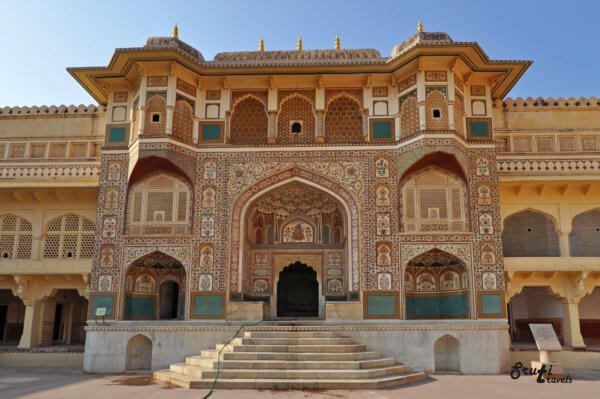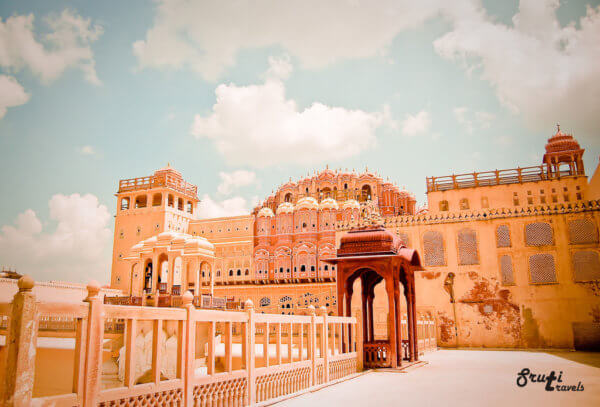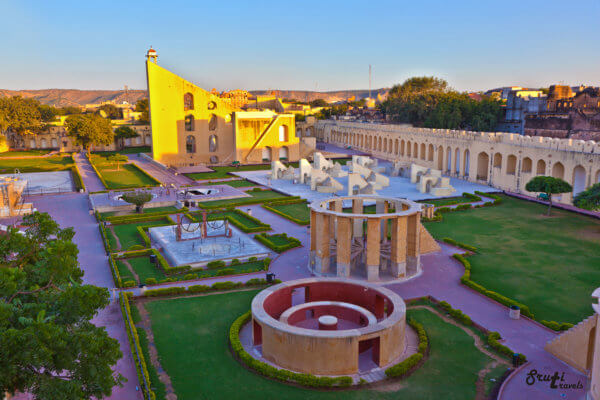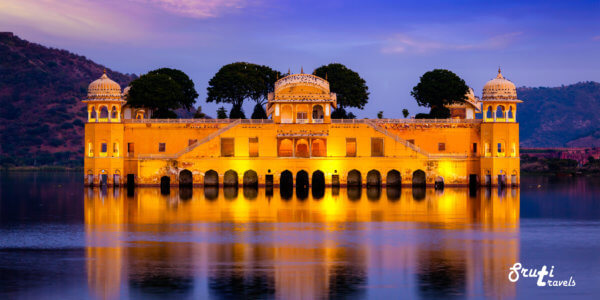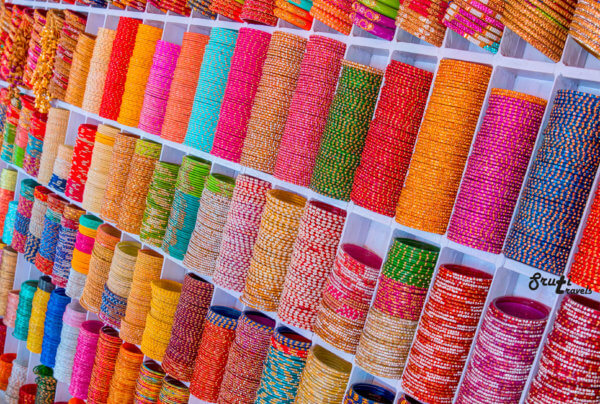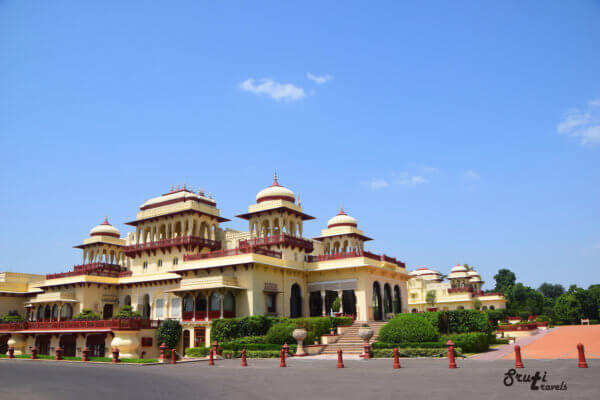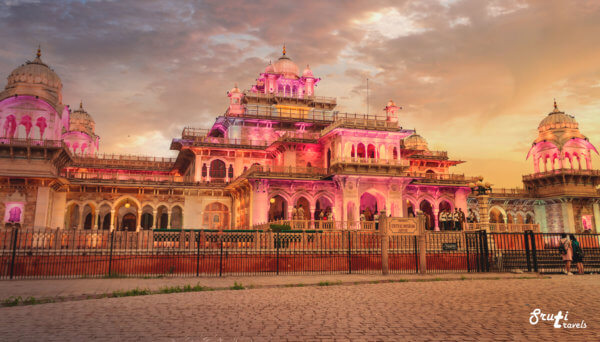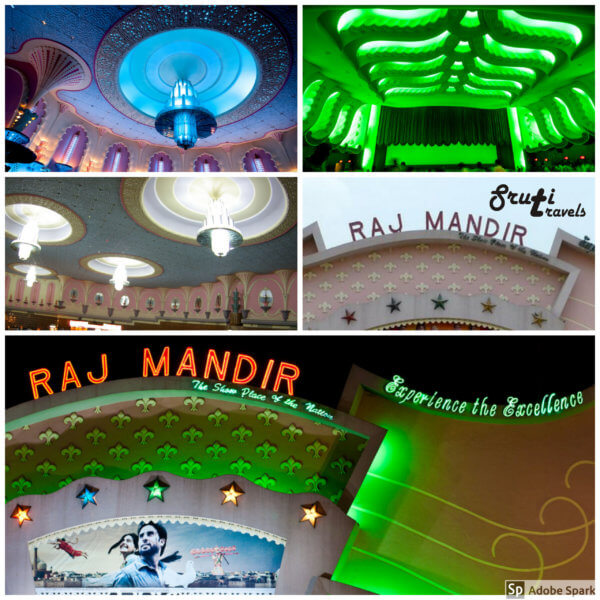Jaipur Sightseeing
PACKAGE OVERVIEW
Nahargarh Fort
Sight Seeing
Situated high up on the Aravali hills, Nahargarh Fort which means Abode Of Tigers is one of the major attractions of Jaipur. Its foundation was laid by Jai Singh II to tighten the security of region and providing safety shelter to the British wives during the Sepoy Mutiny of 1857. Its most enchanting view from the whole city at night makes it a popular spot for sightseeing in Jaipur. It’s a popular destination for summer excursions in Jaipur and also serves best as a great picnic spot in the city of Jaipur.
Entry:
- Foreigners: INR 50 for adults, INR 25 for students
- Indians: INR 20 for adults, INR 5 for students
Visiting hours: 10:00 am – 5:30 pm
Amber Palace
Amber Palace, surrounded by breathtaking Aravalli Hills, is one of the most popular Jaipur Attractions. This magnificent palace boasts of its symmetrical garden, enticing Mirror room(Sheesh Mahal), the enigmatic abstract paintings, frescos, picturesque sunrise and sunset, bewitching use of jewels and red sand stone are a not-to-miss sights of Jaipur’s timeless beauty. It’s foundation was laid by Raja Man Singh I and later completed by Mirja Raja Jai Singh. A breathtaking view of this palace is when every ray entering in its Sheesh Mahal illuminates the entire hall. It definitely is one of the most spectacular places to visit in Jaipur. Sanjay Leela Bhansali’s Bajirao Mastani’s scenes being shot here has put this Palace in limelight.
Visiting Hours: 8:00 a.m. to 5:30 p.m.
Entry Fee For Indians: 25Rs. (Inclusive of Entry & Camera )
-Foreign Nationals: 150 Rs. (Inclusive of Entry & Camera)
City Palace
Located in the heart of Jaipur, City Palace is the most remarkable monument in the list of places to visit in Jaipur. Upon visiting the magnificent City Palace, it’s easy to see that the royal family of Jaipur was one of the richest in India. The palace’s huge complex of courtyards, gardens, and buildings blends both Rajasthani and Mughal architecture. The royal family lives still lives there, in the graceful Chandra Mahal. It’s possible to access the private rooms, with a personal guide, for an additional cost. Also inside the City Palace complex is a museum, art gallery, and interesting displays of royal costumes and old Indian weapons. A new exhibit dedicated to paintings and photography was recently added, including old photos of the woman of the palace. In addition, note that it’s now possible to visit the City Palace at night and see an outstanding sound and light show.
- Entry Cost: There are various ticket options for the City Palace, depending on how much of it you want to see. Prices start from 130 rupees for Indians and 500 rupees for foreigners. Museum at night tickets cost 900 rupees for foreigners and 450 rupees for Indians.
- Hours: 9.30 a.m. to 5 p.m. daily. And 7 p.m. to 10 p.m. for night viewing.
Hawa Mahal
Hawa Mahal or the Palace of the Winds is the most remarkable Palace of Jaipur. This exclusive 5 storied architectural structure was built by Maharaja Sawai Pratap Singh and has 953 small windows called Jharokhas representing the crown of Hindu God, Lord Krishna. It was built in 1799 for royal women to observe the bustling streets without being seen, the honeycomb shaped palace is now one of the most iconic buildings in Jaipur.
Jantar Mantar Observatory
Jantar Mantar literally means the calculation instrument. It was built by Maharaja Sawai Jai Singh II between 1727 and 1734 after completing the major milestones of city Jaipur. Jantar Mantar Observatory has 14 astronomical structures which measures time, predict eclipses and track stars and Earth’s movement around the sun. The biggest of these is the Samrat Yantra which if 90 m tall and largest sundial in the world. The time for eclipse and arrival of monsoons can be calculated using its shadow. Jantar Mantar now serves as one of the major Jaipur tourist places.
Jal Mahal
It was during the Rajput era that India has seen some of the glorious forts and palaces. A classic palace enlisted under Rajputana architecture is Jal Mahal or the Water Mahal. It is definitely a must see place in Jaipur. A five storey structure and built in red sanstone in the middle of Man Sagar Lake is an important Jaipur tourist palce. Traditional boats are used to reach to this palace.When the lake is filled, out of the five stories, four remains underwater and thus offers a breathtaking view. This palace offers a perfect fusion of Mughal and Rajput styles of architecture. Jal Mahal is home to some of the colourful migratory birds like flamingo, Great Crested Grebe, Pintail, Kestrel, Coot and Grey Wagtail.
Jaipur markets
An ideal place to spend time in Jaipur is to explore its local market and experience the vibes of the Pink City. These markets has numerous stories about its glorified history engraved in every corner. The two main markets of Jaipur are Johri Bazaar and Bapu Bazaar. Built by the founder of Jaipur, Johri Bazaar is the oldest largest and busiest shopping mall where you can get precious gemstones, timeless jewelleries, beautiful bangles, finest sarees and list constinues. The gemstones found here are costliest in the world.One of the largest camel market in the world, Bapu Bazaar is known for its leather goods and Morji shoes. An excellent place to shop is the wholesale flower market (phool mandi) just inside Chandi ki Taksal gate in the Old City where you’ll find an enticing variety of goods. It’s on from 6 a.m. Maniharon ka Rasta is an entire lane full of lac bangle makers.
Rambagh Palace
The former residence of the Maharaja of Jaipur, Rambagh Palace is a luxurious building of Jaipur. A beautiful amalgamation of Rajput and Mughal culture in its architecture takes you back to the glorified days of Mughal families is visible in this palace. Now it is reestablished as a hotel by Taj.
Entry timings: since it is a hotel right now, you can go and book the rooms to stay there at any time.
Albert Museum
To honor the visit of the Prince of Wales, the foundation of Albert Museum was laid in 1876. After the commencement arose confusion about the usage of this hall. In 1880, Maharaja Sawai Madho Singh II who was ruling Jaipur opened a museum within the hall following the suggestion of Dr Thomas Holbein Hendley. Started from displaying products of local craftsmen, the museum has now gained its popularity to international level. One of the six ‘Egyptian Mummies’ in India has been kept here.
Raj Mandir Cinema
Raj Mandir often called the Pride of Asia, affirming a capacity of 1300 audience is am important location of Jaipur city. It was built in 1976 and on Bhagwan Das Road. W M Namjoshi while designing wanted the building to reflect the culture and tradition of Jaipur gracefully in Art Modern Style. Exotic Rajasthani delicacies and cuisines being served inside its cafeteria and the lighting system adds to your wonderful experience in Raj Mandir.
Full Day Tour 09:00 AM To 06:00 PM:
Amber Fort & Palace, City Palace & Museum, Observatory (Jantar Mantar), Hawa Mahal (Front View), Jal Mahal (Front View), “Gaitore” Maharaja’s Cenotaphs (View on the Way), Nahargarh Fort & Palace, Jaigarh Fort, Laxminarayan Temple (Birla Mandir), Kanak Virndavan
Cost:
Rs.3,000/- Innova (max 5Pax),
Rs.2,000/- Etios/Dzire (max 3Pax)
Half Day tour 10:00 AM To 03:30 PM:
Amber Fort & Palace, City Palace & Museum, Observatory (Jantar Mantar), Central Museum (Albert Hall), Hawa Mahal (Front View), Jal Mahal (Front View), “Gaitore” Maharaja’s Cenotaphs (View on the way),Laxminarayan Temple (Birla Mandir)
Cost:
Rs.2,500/- Innova (max 5Pax),
Rs.1,500/- Etios/Dzire (max 3Pax)
Night city tour 06:30 PM To 10:30 PM:
Raj Mandir Cinema Hall, Statue Circle, Amar Jawan Jyoti, Vidhan Sabha Bhawan, Laxminarayan Temple (Birla Mandir), Albert Hall, Hawa Mahal, Jal Mahal, Kanak Virndavan, Amber Fort, Nahargarh Fort (Dinner)
Cost:
Rs.2,500/- Innova (max 5Pax),
Rs.1,500/- Etios/Dzire (max 3Pax)
Includes:
Transport as indicated above
All Parking, Toll & Driver Bata
Guide Services: Rs.1000/- for upto 5 Pax
Taxes extra



